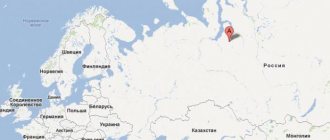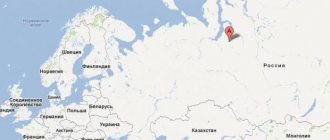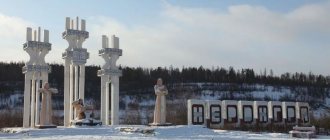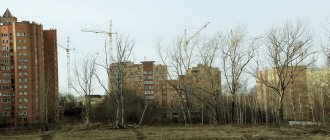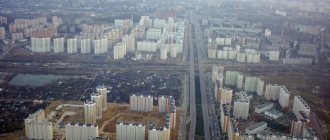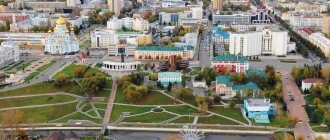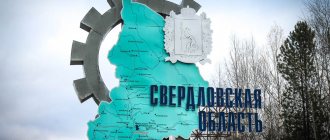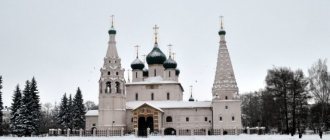For other places with the same name, see Sretensk (populated area).
City in Zabaykalsky Krai, Russia
| Sretensk Sretensk | |
| City [1] | |
| Flag Coat of arms | |
| Location of Sretensk | |
| Sretensk Location of Sretensk Show map of Russia Sretensk Sretensk (Trans-Baikal Territory) Show map of Zabaykalsky Krai | |
| Coordinates: 52°15'N 117°43'E / 52.250°N W. 117.717°E / 52,250; 117.717 Coordinates: 52°15'N 117°43'E. / 52.250 ° N W. 117.717°E / 52,250; 117,717 | |
| A country | Russia |
| Federal subject | Transbaikal region [1] |
| Administrative region | Sretensky district [1] |
| Based | 1689 |
| City status from | 1926 |
| Height | 490 m (1610 ft) |
| population size (2010 Census) [2] | |
| • General | 6850 |
| • Evaluate (2018) [3] | 6581 ( -3,9% ) |
| Administrative status | |
| • Capital from | Sretensky district [1] |
| Municipal status | |
| • Municipal district | Sretensky municipal district [4] |
| • Urban village | Sretenskoye urban settlement [4] |
| • Capital from | Sretensky municipal district [5], urban settlement Sretenskoye [6] |
| Timezone | UTC+9 (MSK+6[7]) |
| Postal code [8] | 673500, 673504 |
| OKTMO ID | 76640101001 |
Sretensk, 1885
Sretensky
(Russian: Sretensk, IPA: [srʲetʲɪnsk]) is a city and administrative center in Sretensky District in Zabaykalsky Krai, Russia, located on the right bank of the Shilka River (Amur Basin), 385 km (239 mi) east of Chita, the administrative center of the region . Population: 6,850 (2010 census); [2] 8,192 (2002 census); [9] 10,445 (1989 census). [10]
Climate[edit]
Sretensky has a very continental subarctic climate (Köppen climate classification DWC
listen)) bordering closely on a humid continental climate (Köppen climate classification
DWB
), with bitterly cold winters and warm summers. Precipitation is quite low, but in summer it is much higher than at other times of the year.
| Climate data for Sretensk | |||||||||||||
| Month | Jan | Feb | Mar | Apr | May | Jun | Jul | Aug | Sep | October | But I | December | Year |
| Record high °C (°F) | 0,2 (32,4) | 3,1 (37,6) | 18,4 (65,1) | 27,3 (81,1) | 33,6 (92,5) | 41,3 (106,3) | 39,7 (103,5) | 36,7 (98,1) | 31,4 (88,5) | 26,7 (80,1) | 11,7 (53,1) | 2,6 (36,7) | 41,3 (106,3) |
| Average high °C (°F) | -22,9 (-9,2) | -15,2 (4,6) | -3,7 (25,3) | 8,4 (47,1) | 17,8 (64,0) | 24,5 (76,1) | 26,2 (79,2) | 23,4 (74,1) | 16,6 (61,9) | 6,6 (43,9) | -9,2 (15,4) | -21,0 (-5,8) | 4,3 (39,7) |
| Daily average °C (°F) | -29,2 (-20,6) | -23,6 (-10,5) | -12,2 (10,0) | 1,2 (34,2) | 9,8 (49,6) | 16,5 (61,7) | 19,1 (66,4) | 16,3 (61,3) | 8,8 (47,8) | -0,8 (30,6) | -15,8 (3,6) | -26,7 (-16,1) | -3,0 (26,6) |
| Average low °C (°F) | -34,6 (-30,3) | -30,7 (-23,3) | -20,2 (-4,4) | -5,7 (21,7) | 2,0 (35,6) | 9,0 (48,2) | 13,1 (55,6) | 10,7 (51,3) | 2,8 (37,0) | -6,7 (19,9) | -21,3 (-6,3) | -31,8 (-25,2) | -9,4 (15,1) |
| Record low °C (°F) | -50,7 (-59,3) | -48,6 (-55,5) | -40,0 (-40,0) | -24,7 (-12,5) | -10,2 (13,6) | -4,0 (24,8) | 0,6 (33,1) | -2,6 (27,3) | -12,5 (9,5) | -29,3 (-20,7) | -41,1 ( -42,0 ) | -48,4 (-55,1) | -50,7 (-59,3) |
| Average precipitation, mm (inches) | 3,7 (0,15) | 3,2 (0,13) | 4,7 (0,19) | 12,7 (0,50) | 27,0 (1,06) | 54,9 (2,16) | 97,2 (3,83) | 84,1 (3,31) | 41,9 (1,65) | 12,0 (0,47) | 8,2 (0,32) | 6,2 (0,24) | 355,8 (14,01) |
| Average number of days with precipitation (≥ 0.1 mm) | 6.0 | 4.5 | 4.3 | 5,4 | 7.3 | 11,3 | 14,2 | 13,4 | 9,4 | 5,3 | 7.1 | 8.1 | 96,3 |
| Average relative humidity (%) | 73,4 | 69,3 | 60,0 | 46,8 | 46,6 | 60,4 | 68,6 | 71,4 | 66,3 | 61,5 | 71,2 | 75,1 | 64,2 |
| Average sunshine hours per month | 151 | 191 | 246 | 235 | 262 | 261 | 242 | 211 | 193 | 195 | 150 | 120 | 2,457 |
| Source: climbase.ru (1936-2012) [11] June record) [12] | |||||||||||||
Links[edit]
Notes[edit]
- ^ abcde Register of administrative-territorial units and settlements of the Trans-Baikal Territory
- ^ a b Federal State Statistics Service (2011). “All-Russian Population Census 2010. Volume 1" [All-Russian Population Census 2010, vol. 1]. All-Russian Population Census 2010 [All-Russian Population Census 2010]
. Federal State Statistics Service. - "26. The size of the permanent population of the Russian Federation by municipalities as of January 1, 2022". Federal State Statistics Service. Retrieved January 23, 2022.
- ^ abc Law No. 317-ZZK
- Law No. 316-ZZK
- Federal State Statistics Service. Federal Agency for Technological Regulation and Metrology. No. OK 033-2013 January 1, 2014 “All-Russian classifier of municipal territories. Code 76 640 101 ". (Federal State Statistics Service. Federal Agency for Technological Regulation and Metrology. No. OK 033-2013 dated January 1, 2014. Russian classification of municipal territories. Code 76 640 101.
). - "On the Calculation of Time". Official Internet portal of legal information
. June 3, 2011. Retrieved January 19, 2022. - Post office. Information and computing center of OASU RPO. ( Post office
).
Search for postal service objects ( postal Search for objects
) (in Russian) - ↑
Federal State Statistics Service of Russia (May 21, 2004).
“The population of Russia, the constituent entities of the Russian Federation as part of federal districts, urban settlements, settlements, settlements of 3 thousand or more people” [Population of Russia, its federal districts, federal districts, districts, urban settlements, rural settlements - administrative centers and rural settlements with a population of more than 3,000 people] (XLS). All-Russian Population Census 2002
. - “All-Union Population Census of 1989. The actual population of the union and autonomous republics, autonomous regions and districts, territories, negative phenomena, urban settlements and villages of Sretensk, Russia.” Climatebase.ru. Retrieved January 24, 2013.
- . Climatebase.ru https://climatebase.ru/station/30777/from2000/?lang=en. Retrieved January 24, 2013. Missing or empty |title=( help )
Historical heritage of the city of Sretensk
Sretensk (Sretensk) is a city in the Chita region (Trans-Baikal Territory) of Russia, the administrative center of the Sretensky district. City since 1926, population 7.9 thousand people. (2008). The city is located in the southeast of Transbaikalia, in the foothills of the Borschovochny ridge, on the right bank of the Shilka River, (Amur basin) 385 km from Chita. The area of Sretensk is 350 hectares. A railway station on a branch line from Kuenga station on the Trans-Siberian Railway [1].
The city of Sretensk is the oldest city in Transbaikalia. The Sretensky fort was founded shortly after 1704. It is not in the city list of the Nerchinsk district for this year and first appears in the district's estimate list for 1714 as the “fortress of Nizhny Novago”, which has 5 quitrent peasants. In view of this, the opinion of a number of scientists (B.S. Kulikov, V.F. Balabanov) about the construction of a fort in 1689 seems unfounded [2].
The first mention of the Sretensky fortress is found only in the materials of the Siberian order “The Tale of the Souls of the Men's Polo of the Sretensky Fortress.” The original name of the fort was due to its location. It was located 90 km below Nerchinsk along the river. Shilki on the right bank. In 1719, the fort was already called Stretensky, which indicates the construction of the Church of the Presentation of the Virgin Mary in it. The presence of fortification functions at the fort has not been proven by historians. The German scientist G.F., who visited the prison in 1735 Miller, reported that “there has never been a palisade fortification here, and the name “fortress” is incorrectly applied to the item” [3].
In view of this, the term “fortress” was applied to Stretensk as an administrative function equal to other forts of the Nerchinsk Voivodeship.
In 1775, Stretensk received the status of a city and became the center of the county, first as part of the Udinsk province, which was part of the Irkutsk province, and then as part of the Nerchinsk region of the Irkutsk governorship. In 1782, the population of Stretensk was 100 people: 34 merchants, 14 townspeople, 21 artisans, 29 courtyard people, one priest and one clerk. On October 26, 1790, by decree of Catherine II, the city was most highly awarded a coat of arms with the description: “In a blue field, silver ingots are placed, as a sign that in the area of this city there are silver ores, where they are smelted.” The image of the coat of arms symbolized the silver smelters, mines and deposits of the region. Silver mining here continued for almost a century and a half, from 1704 to 1803. silver factories produced 22,405 pounds of silver to Russia. However, silver and subsequent gold mining played a negative role in the development of Stretensk. At the same time, tens of thousands of mining peasants died here from extreme poverty and hunger during these years [4].
The city did not receive further development, because of this, the impossibility of Stretensk’s existence as an urban center became obvious to the administration of Eastern Siberia. In 1797, the district was liquidated, and Stretensk was removed from the state, which meant its exclusion from the number of cities [5].
Late XIX – early XX centuries. – the era of short-term revival of Stretensk. This was facilitated by transit trade, its own shipping company and merchant shipping. The creation of the Amur flotilla was initiated by the Governor-General of Eastern Siberia N.N. Muravyov. At the same time, Stretensk remained for a long time, until the liquidation of the autocracy, the center of Nerchinsk hard labor and exile, which had a negative impact on its economic and cultural development. The importance of the city as a transshipment point has increased many times over [6].
For quite a long time, Sretensk was the village of the Third Military Department of the Transbaikal Cossack Army. The most important thing in the history of the city was the construction at the end of the 19th century. railway and the start of operation of the Sretensk station, the terminus of the Trans-Siberian Railway. At the same time, Sretensk served as the main base of the waterway along the Shilka and Amur. The roads to the Nerchinsky and Aleksandrovsky Plants began here.
Until 1917, Sretensk was a typical trading merchant city; in 1910, 39.4% of the population was engaged in trade here, there were 105 trading establishments, the annual turnover of which was 7,239,400 rubles. The largest stores belonged to merchants of the first guild - Russians, Jews and Tatars: A.F. Vtorov, Ya.S. Andoverova, I.E. Shustov and others. It housed the treasury, large banks with a turnover of 130 million rubles, 3 shipping companies, trading companies, 2 sausage establishments, 13 factories (brick factory, soap factory, tannery, fur coat factory, saddle factory, saddlery factory, paint factory, rope factory, 2 breweries, shot foundry, tar factory ), steam mills, power plant. These enterprises employed 145 people. 69 farms were engaged in agriculture. Before the First World War, Sretensk was second only to Chita in Transbaikalia in terms of trade and was on the same level as Verkhneudinsk. Manufactures, haberdashery, carriages, horses, cattle, grain were sent from Sretensk to the Amur by steamships, and in winter, Sretensk supplied the gold mines with food and supplies by sleigh ride on camels [7].
Active economic activity left a certain imprint on the appearance of the city; good-quality houses were built and some ancient buildings still decorate the city. There were 3 photographic studios, 3 hairdressing salons, 5 pastry shops and bakeries. Until 1917, there were: Sretensky Teachers' Seminary, a mining school, 3 parish schools, a railway school, a Jewish school, a military hospital for 50 beds, 6 churches; in October 1917, 4 classes of a mixed gymnasium were opened. There was an illusion hall, a garden and a theater at Stein's hotel.
In 1920, the newspaper “Transbaikal Red Fighter” was published. In 1922, Sretensk again became a district town, in 1962 it “grew” to the district center of the Far Eastern Territory, like Chita, and from 1930 to this day it has been the district center of first the East Siberian Territory, then the Chita region, and from March 1, 2008 – the center of the municipal formation Sretensky district of the Trans-Baikal Territory.
In 1989, the city's population was more than 10 thousand people. There were a felted shoe factory, a meat processing plant, a food processing plant, a furniture woodworking plant, the Sretensky integrated timber processing plant (until 1993), a pier, a cooperative technical school, and a pedagogical school. In 1986, a road bridge was built across Shilka. In 2002, the city's population increased to 8,192 people. There were 33 organizations, of which 19% were state, 22% municipal, 52% private. The municipal unitary enterprise SSPK, the Sretensky cooperative, the Sretensky forestry enterprise and the Sretensky rural forestry enterprise and others worked. Currently, there are 3 secondary schools, primary and evening schools, 10 preschool educational institutions, Sretensky Pedagogical College, Youth Sports School, Children's Art Center, 5 libraries, the Sretensky District Museum of Local Lore, 2 cultural and leisure institutions, 2 sports institutions, Sretensky District Hospital.
In 1990, Sretensk was included in the list of historical settlements of the RSFSR. 150 architectural monuments are registered, incl. Mutual loan bank, Weinerman Cinema “Grand Illusion Mercury”, Moshkovich’s estate assignment, Siberian Trade Bank, Lunacharsky streets development complex, Naberezhnaya streets development complex. St. George's Church is active. The editorial office of the weekly regional newspaper “Soviet Transbaikalia” is located [8]
Literature:
1. Sretensk // Cities of Russia: Encyclopedia / ch. ed. G. M. Lappo. – M., 1994. – P. 438.
2. Artemyev A.R. Cities and forts of Transbaikalia and the Amur region in the second half of the 17th–18th centuries / A.R. Artemyev; FEB RAS, Institute of History, Archeology and Ethnography of the Peoples of the Far East. – Vladivostok, 1999. – P. 85.
3. Ibid.
4. Kurennaya I.G. Flying from the depths of centuries / I.G. Smoked. – M.; Chita, 1997. – P. 31.
5. Chapygin V. The ancient city of Sretensk / V. Chapygin, I. Kulikov // Transbaikalia. – 2004. – No. 3. – June. – P. 7–14.
6. Artemyev A.R. Cities and forts of Transbaikalia and the Amur region in the second half of the 17th–18th centuries / A.R. Artemyev; FEB RAS, Institute of History, Archeology and Ethnography of the Peoples of the Far East. – Vladivostok, 1999. – P. 86.
7. Sergeev N.G. Past and present: Sretensk – 300 years old / N.G. Sergeev // Transbaikal worker. – 1989. – June 29. – P. 3.
8. Chashchin A. Sretensk. Pages of the past: Cossacks. Merchants. Prisoners of war. Banknotes / A. Chashchin. – Chita: Express Publishing House, 2009. – pp. 38–40.
9. Belonosova L.A. Sretensk / L.A. Belonosova, R.I. Tsuprik // Encyclopedia of Transbaikalia. Chita region / SB RAS. CHIP. Ministry of Education of the Russian Federation. ZabSPU im. N. G. Chernyshevsky. Administration Chit. region; Ch. ed. R. F. Geniatulin; resp. ed.-comp. N. E. Drobotushenko. – Novosibirsk. – 2006. – P. 90–91.
